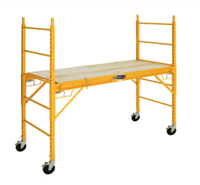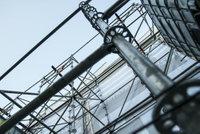Content Menu
● Understanding the Scaffold Tagging System
>> Key Components
>> Color Codes and Their Meanings
● Why Contractors Shall Use a Scaffold Tagging System
>> Enhancing Safety
>> Ensuring Regulatory Compliance
>> Promoting Accountability
>> Improving Efficiency
● Implementing a Scaffold Tagging System
● Best Practices for Scaffold Tagging
● Conclusion
● FAQ
>> 1. What is a scaffold tagging system?
>> 2. How does a scaffold tagging system enhance safety on construction sites?
>> 3. What are the key OSHA requirements related to scaffold tagging?
>> 4. What are the different color codes used in a scaffold tagging system and what do they signify?
>> 5. How often should scaffolds be inspected and tagged?
● Citations:
In the construction industry, safety is not just a priority; it's a necessity. Scaffolding, a common structure on construction sites, presents significant risks if not properly managed and maintained. To mitigate these risks and ensure compliance with safety regulations, contractors must implement effective measures. Among these, the scaffold tagging system stands out as a crucial tool. This article delves into the reasons why contractors shall use a scaffold tagging system for safety compliance, exploring its components, benefits, implementation, and best practices.
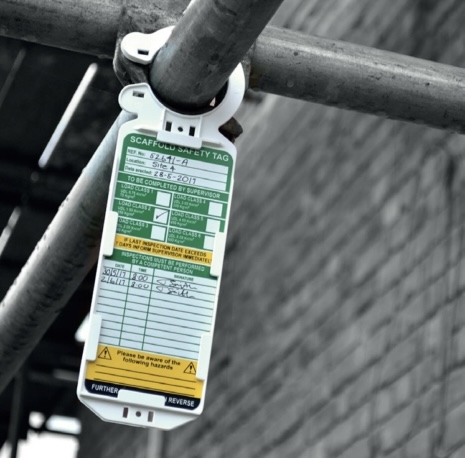
Understanding the Scaffold Tagging System
A scaffold tagging system involves using tags to visually indicate the safety status of scaffolding structures[1]. These tags provide clear information to workers, supervisors, and inspectors regarding whether a scaffold has been inspected, requires attention, or is unsafe for use[1]. By adhering to a standardized system, construction companies can significantly reduce accidents and promote a culture of safety[1].
Key Components
Understanding the components of a scaffold tagging system is crucial for effective implementation.
- Scaffold Tags: These are the physical tags attached to the scaffolding, typically color-coded to indicate different safety statuses [1, 2].
- Tag Holders: These secure the tags to the scaffold, ensuring they remain visible and protected from the elements[7].
- Inspection Checklist: A standardized checklist used during scaffold inspections to assess its safety and integrity[3].
- Tagging Procedure: A documented procedure outlining how and when to attach, update, and remove scaffold tags[1].
- Training Program: Comprehensive training for workers and supervisors on how to interpret and respond to scaffold tags[2].
Color Codes and Their Meanings
The brilliance of the scaffold tagging system lies in its simplicity, particularly in the color-coded scheme.
- Green Tag: Indicates that the scaffold has been inspected and is safe for use[2]. It includes the date of inspection and the inspector's name or identification[3].
- Yellow Tag: Indicates that the scaffold requires caution or has specific limitations[2]. It specifies the nature of the hazard or limitation and any necessary precautions. (Note: some regions have phased out yellow tags to prevent confusion[2].)
- Red Tag: Indicates that the scaffold is unsafe for use due to identified hazards[2]. It prohibits access until the issues are resolved and a green tag is re-attached.
Why Contractors Shall Use a Scaffold Tagging System
There are several compelling reasons why contractors shall use a scaffold tagging system on construction sites.
Enhancing Safety
- Visual Communication: Scaffold tags provide immediate visual cues about the scaffold's safety status, reducing reliance on verbal communication[1]. This is especially useful in noisy construction environments.
- Hazard Identification: Tags clearly identify potential hazards and limitations, such as load capacity restrictions or missing components [1, 2].
- Accident Prevention: By ensuring that only inspected and safe scaffolds are used, the system significantly reduces the risk of accidents and injuries[1].
- Fall Prevention: The tagging system is central to scaffolding safety, as it provides a clear, at-a-glance method to communicate the status of scaffolding, ensuring that only safe, inspected, and approved structures are used[2].
Ensuring Regulatory Compliance
- OSHA Compliance: Implementing a scaffold tagging system helps construction companies comply with OSHA regulations regarding scaffold safety[1].
- Documentation: The system provides a documented record of scaffold inspections and maintenance, which can be crucial during regulatory audits.
- Legal Protection: Compliance with safety regulations can protect contractors from legal liabilities in the event of an accident.
- Mitigating Risks: A scaffold tagging system can help mitigate these risks and ensure compliance with OSHA guidelines[1].
Promoting Accountability
- Inspector Responsibility: Scaffold tags include the inspector's name or identification, holding them accountable for the accuracy and thoroughness of the inspection[3].
- Worker Awareness: Workers are more likely to follow safety protocols when they know that scaffolds are regularly inspected and tagged [1, 2].
- Supervisory Oversight: Supervisors can quickly assess the safety status of scaffolds and ensure that workers are using them properly.
- Accountability: Through the use of scaffold tags, construction site workers and supervisors are held accountable for the integrity of the scaffold, ensuring that it is properly inspected, maintained, and accessible only when it is safe to do so[1].
Improving Efficiency
- Streamlined Inspections: Standardized inspection checklists and tagging procedures streamline the inspection process, saving time and resources[3].
- Reduced Downtime: By promptly identifying and addressing potential hazards, the system minimizes downtime caused by accidents or safety violations[1].
- Better Communication: Clear and consistent tagging improves communication among workers, supervisors, and inspectors, leading to more efficient operations[3].
-Implementing and managing scaffold tagging systems requires adherence to best practices. Firstly, tag placement is key. Safety tags should be affixed in a clearly visible location, easily noticeable by anyone accessing or approaching the scaffolding[3].
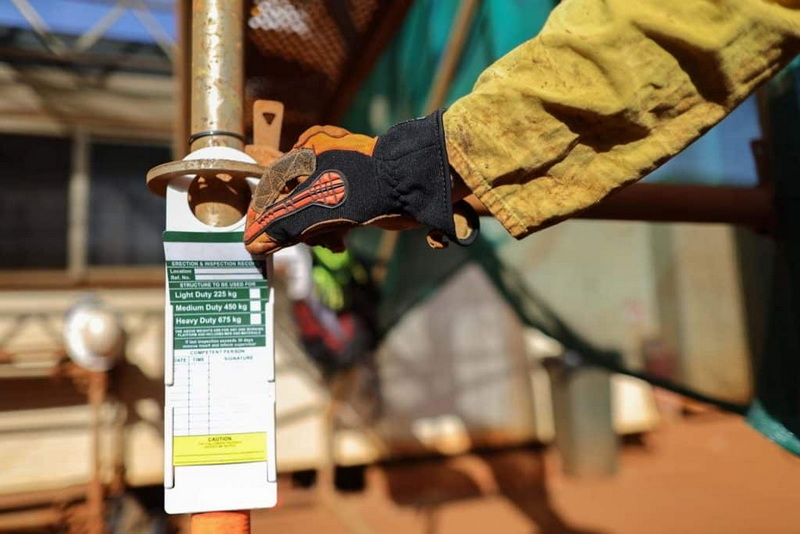
Implementing a Scaffold Tagging System
Implementing a scaffold tagging system involves several key steps.
1. Develop a Written Procedure: Create a comprehensive written procedure that outlines the scope of the system, roles and responsibilities, inspection protocols, tagging procedures, and training requirements [1, 3].
2. Provide Training: Conduct thorough training for all workers and supervisors on the proper use and interpretation of scaffold tags[2]. This training should cover hazard recognition, fall protection measures, and load capacity limits.
3. Conduct Regular Inspections: Perform regular inspections of all scaffolds before each work shift and after any event that could affect their structural integrity[3].
4. Use Standardized Tags: Utilize standardized scaffold tags with clear color codes and essential information[2].
5. Maintain Records: Keep detailed records of all scaffold inspections, maintenance activities, and tag replacements[3].
6. Ensure Compliance: Regularly monitor and audit the system to ensure compliance with OSHA regulations and company policies[1].
Best Practices for Scaffold Tagging
To maximize the effectiveness of a scaffold tagging system, contractors should adhere to the following best practices[3].
- Visible Placement: Attach tags in a clearly visible location on the scaffold, where they can be easily seen by anyone accessing or approaching the structure[3].
- Durable Materials: Use durable tags and tag holders that can withstand harsh weather conditions and physical wear and tear [4, 7].
- Regular Updates: Update tags immediately after each inspection or maintenance activity to reflect the current safety status of the scaffold[3].
- Consistent Enforcement: Consistently enforce the tagging system and address any violations promptly.
- Employee Involvement: Encourage workers to actively participate in the system by reporting any safety concerns or tag discrepancies.
Conclusion
Contractors shall use a scaffold tagging system not merely as a regulatory obligation, but as a fundamental component of a comprehensive safety program. By enhancing safety, ensuring compliance, promoting accountability, and improving efficiency, the scaffold tagging system contributes to a safer and more productive construction site. Implementing a well-designed and consistently enforced tagging system is an investment in the well-being of workers and the success of the project.
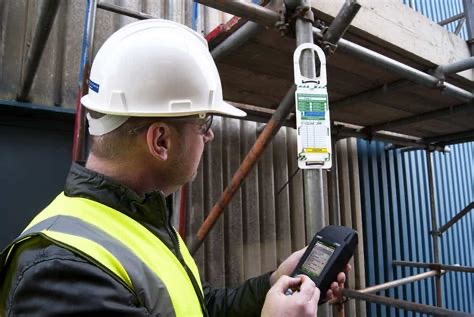
FAQ
1. What is a scaffold tagging system?
A scaffold tagging system involves using color-coded tags to visually indicate the safety status of scaffolding structures[1]. These tags provide clear information about whether a scaffold has been inspected, requires attention, or is unsafe for use.
2. How does a scaffold tagging system enhance safety on construction sites?
It enhances safety by providing visual communication of the scaffold's safety status, identifying potential hazards, and ensuring that only inspected and safe scaffolds are used, thus reducing the risk of accidents and injuries [1, 2].
3. What are the key OSHA requirements related to scaffold tagging?
OSHA requires regular inspections of scaffolds by a competent person, proper training for workers on scaffold safety, and the use of appropriate fall protection measures[1]. While OSHA does not explicitly mandate a tagging system, implementing one can help contractors demonstrate compliance with these requirements.
4. What are the different color codes used in a scaffold tagging system and what do they signify?
The color codes typically used are green (safe for use), yellow (use with caution), and red (unsafe for use)[2]. These colors provide an immediate visual indication of the scaffold's safety status.
5. How often should scaffolds be inspected and tagged?
Scaffolds should be inspected before each work shift and after any event that could affect their structural integrity, such as adverse weather conditions or alterations[3]. Tags should be updated immediately after each inspection to reflect the current safety status.
Citations:
[1] https://scaffoldtype.com/scaffold-tagging-system/
[2] https://coreehs.com/scaffolding-safety-enhancing-accident-prevention-with-tagging-system/
[3] https://scaffoldtype.com/scaffold-tagging-systems/
[4] https://www.bradycanada.ca/scaffold-inspection-tags
[5] https://tagsafe.site
[6] https://www.seton.ca/tags/osha-and-safety-tags/scaffold-tags.html
[7] https://www.bradycanada.ca/scaffold-inspection-tags/scafftag-inserts-scafftag-bulletin-de-construction-et-dinspection-erection-insp-pid-108003
[8] https://trdsf.com/blogs/news/scaffolding-tags-safety-compliance-guidelines













